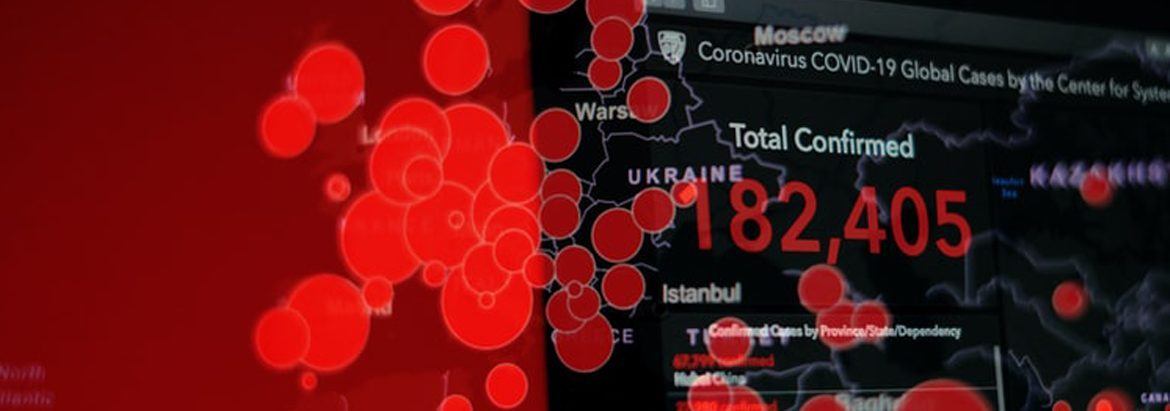
Discover, Monitor, Analyze & Predict COVID-19


“Uber, the world’s largest taxi company, owns no vehicles. Facebook, the world’s most popular media owner, creates no content. Alibaba, the most valuable retailer, has no inventory. Netflix, the world’s largest movie house, own no cinemas. And Airbnb, the world’s largest accommodation provider, owns no real estate. Something interesting is happening.”
– Tom Goodwin, an executive at the French media group Havas.
This new breed of companies is the fastest growing in history because they own the customer interface layer. It is the platform where all the value and profit is. “Platform business” is a more wholesome termfor this model for which data is the fuel; Big Data & AI/ML technologies are the harbinger of new waves of productivity growth and innovation.
With Big data and AI/ML is making a big difference in the area of public health, let’s see how it is helping us tackle the global emergency of coronavirus formally known as COVID-19.

“With rapidly spreading disease, a two-week lag is an eternity.”
Chinese technology giant Alibaba has developed an AI system for detecting the COVID-19 in CT scans of patients’ chests with 96% accuracy against viral pneumonia cases. It only takes 20 seconds for the AI to decide, whereas humans generally take about 15 minutes to diagnose the illness as there can be upwards of 300 images to evaluate.The system was trained on images and data from 5,000 confirmed coronavirus cases and has been tested in hospitals throughout China. Per a report, at least 100 healthcare facilities are currently employing Alibaba’s AI to detect COVID-19.
Ping An Insurance (Group) Company of China, Ltd (Ping An) aims to address the issue of lack of radiologists by introducing the COVID-19 smart image-reading system. This image-reading system can read the huge volumes of CT scans in epidemic areas.
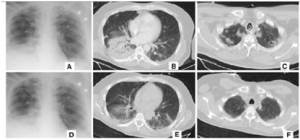
Ping An Smart Healthcare uses clinical data to train the AI model of the COVID-19 smart image-reading system. The AI analysis engine conducts a comparative analysis of multiple CT scan images of the same patient and measures the changes in lesions. It helps in tracking the development of the disease, evaluation of the treatment and in prognosis of patients.Ultimately it assists doctors to diagnose, triage and evaluate COVID-19 patients swiftly and effectively.
Ping An Smart Healthcare’s COVID-19 smart image-reading system also supports AI image-reading remotely by medical professionals outside the epidemic areas.Since its launch, the smart image-reading system has provided services to more than 1,500 medical institutions. More than 5,000 patients have received smart image-reading services for free.
The more solutions the better. At least when it comes to helping overwhelmed doctors provide better diagnoses and, thus, better outcomes.
In Beijing, China, subway passengers are being screened for symptoms of coronavirus, but not by health authorities. Instead, artificial intelligence is in-charge.
Two Chinese AI giants, Megvii and Baidu, have introduced temperature-scanning. They have implemented scanners to detect body temperature and send alerts to company workers if a person’s body temperature is high enough to constitute a fever.
Megvii’s AI system detects body temperatures for up to 15 people per second andup to 16 feet. It monitors as many as 16 checkpoints in a single station. The system integrates body detection, face detection, and dual sensing via infrared cameras and visible light. The system can accurately detect and flag high body temperature even when people are wearing masks, hats, or covering their faces with other items. Megvii’s system also sends alerts to an on-site staff member.

Baidu, one of the largest search-engine companies in China, screens subway passengers at the Qinghe station with infrared scanners. It also uses a facial-recognition system, taking photographs of passengers’ faces. If the Baidu system detects a body temperature of at least 99-degrees Fahrenheit, it sends an alert to the staff member for another screening. The technology can scan the temperatures of more than 200 people per minute.
An international team is using machine learning to scour through social media posts, news reports, data from official public health channels, and information supplied by doctors for warning signs of the virus across geographies.The program is looking for social media posts that mention specific symptoms, like respiratory problems and fever, from a geographic area where doctors have reported potential cases. Natural language processing is used to parse the text posted on social media, for example, to distinguish between someone discussing the news and someone complaining about how they feel.
The approach has proven capable of spotting a coronavirus needle in a haystack of big data. This technique could help experts learn how the virus behaves. It may be possible to determine the age, gender, and location of those most at risk quicker than using official medical sources.
Data from hospitals, airports, and other public locations are being used to predict disease spread and risk. Hospitals can also use the data to plan for the impact of an outbreak on their operations.
Kalman filter was pioneered by Rudolf Emil Kalman in 1960, originally designed and developed to solve the navigation problem in the Apollo Project. Since then, it has been applied to numerous cases such as guidance, navigation, and control of vehicles, computer vision’s object tracking, trajectory optimization, time series analysis in signal processing, econometrics and more.
Kalman filter is a recursive algorithm which uses time-series measurement over time, containing statistical noise and produce estimations of unknown variables.
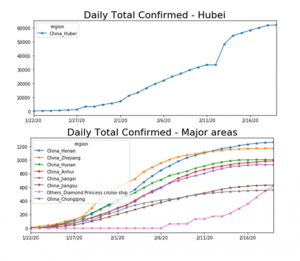
For the one-day prediction Kalman filter can be used, while for the long-term forecast a linear model is used where its main features are Kalman predictors, infected rate relative to population, time-depended features, and weather history and forecasting.
The one-day Kalman prediction is very accurate and powerful while a longer period prediction is more challenging but provides a future trend.Long term prediction does not guarantee full accuracy but provides a fair estimation following the recent trend. The model should re-run daily to gain better results.
GitHub Link: https://github.com/Rank23/COVID19
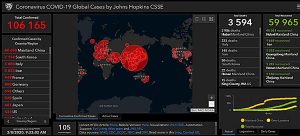
The Center for Systems Science and Engineering at Johns Hopkins University has developed an interactive, web-based dashboard that tracks the status of COVID-19 around the world. The resource provides a visualization of the location and number of confirmed COVID-19 cases, deaths and recoveries for all affected countries.
The primary data source for the tool is DXY, a Chinese platform that aggregates local media and government reports to provide COVID-19 cumulative case totals in near real-time at the province level in China and country level otherwise. Additional data comes from Twitter feeds, online news services and direct communication sent through the dashboard. Johns Hopkins then confirms the case numbers with regional and local health departments. This kind of Data analytics platform plays a pivotal role in addressing the coronavirus outbreak.
All data from the dashboard is also freely available in the following GitHub repository.
GitHub Link:https://bit.ly/2Wmmbp8
Mobile version: https://bit.ly/2WjyK4d
Web version: https://bit.ly/2xLyT6v
One of AI’s core strengths when working on identifying and limiting the effects of virus outbreaks is its incredibly insistent nature. AIsystems never tire, can sift through enormous amounts of data, and identify possible correlations and causations that humans can’t.
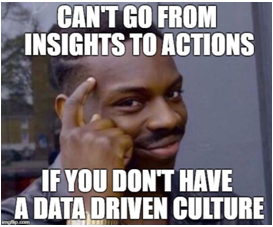
However, there are limits to AI’s ability to both identify virus outbreaks and predict how they will spread. Perhaps the best-known example comes from the neighboring field of big data analytics. At its launch, Google Flu Trends was heralded as a great leap forward in relation to identifying and estimating the spread of the flu—until it underestimated the 2013 flu season by a whopping 140 percent and was quietly put to rest.Poor data quality was identified as one of the main reasons Google Flu Trends failed. Unreliable or faulty data can wreak havoc on the prediction power of AI.

“ Bargunan is a Big Data Engineer and a programming enthusiast. His passion is to share his knowledge by writing his experiences about them. He believes “Gaining knowledge is the first step to wisdom and sharing it is the first step to humanity.“
Please complete the form details and a customer success representative will reach out to you shortly to schedule the demo. Thanks for your interest in ZIF!